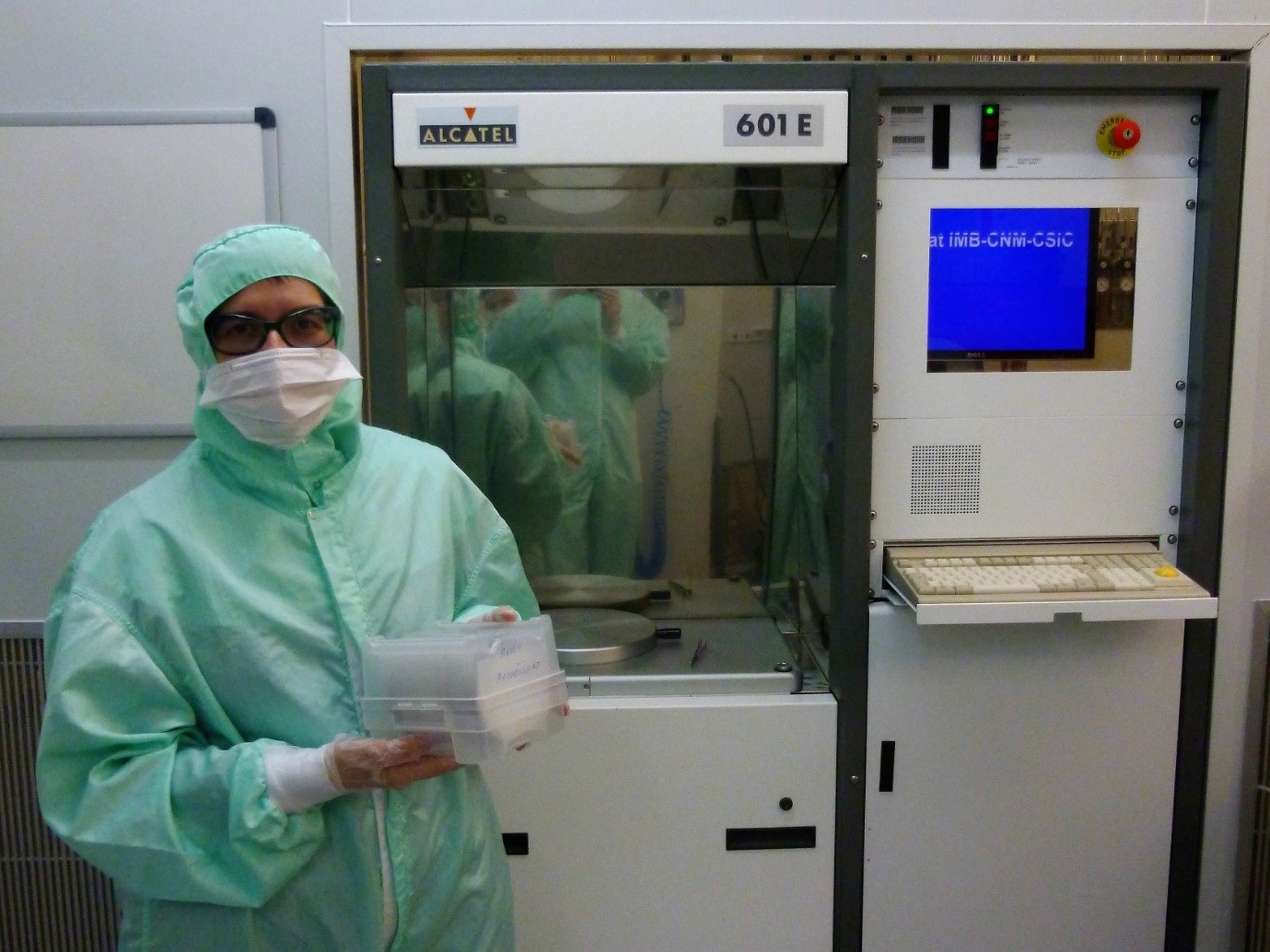
Radiation measurement system developed at CSIC
Jennifer Toes (CERN), 22/02/2018

To fabricate the microsensors CSIC uses the 3D silicon technology that was developed for the advanced radiation detectors installed at the experiments at CERN (Image: IMB-CNM-CSIC)
Detectors for accelerator-based experiments and their related technology offer a world of opportunity that may not seem obvious upon first glance. In that spirit, fostering the development of spin-off detector tech for society is a crucial goal of the AIDA-2020.
AIDA-2020, a European project in the field of detector testing and development, offered up a Proof of Concept (PoC) innovation fund in 2016.
The fund offered €200,000 for up to four projects, to help foster innovation using detector science and technology for the benefit of society. In action, the support offered should bridge the gap between R&D and market-readiness of an industry-oriented application.
After launching a call for proposals, the fund selected three projects based on spin-off detector technologies to receive funding and knowledge transfer support. One successful applicant was the SMART project, also known as ‘Silicon-based Microdosimetry System for Advanced Radiation Therapy’.
Proposed by the Instituto de Microelectrónica de Barcelona (IMB-CNM-CSIC), SMART aims to develop a system that will measure the dosage of radiation delivered to tissue during hadron radiation therapy. As this technique for the treatment of cancer is growing in popularity, optimising the delivery of radiation for effective treatment of tumours whilst minimising damage to healthy tissue is crucial.
The design of the microdosimetry system envisions an array of silicon microsensors and related instrumentation, offering precise measurements down to the cellular level of the energy deposited by the radiation and its spatial distribution. As these measurements can be correlated to the biological effect on irradiated tissue, this tool would be particularly useful for clinicians in treatment planning for cancer patients.
Celeste Fleta, a sensor expert at CSIC and Coordinator of the SMART project, said “To understand how the radiation effects the tissue more precisely, you need to accurately measure the dosage at a cellular level, i.e. to the micrometre scale. This is not possible with conventional macroscopic dosimeters, so we must develop sensors with micro-sized volumes.”
The CSIC team produced prototype silicon microsensors in 2014, adapting the 3D silicon microfabrication technology to the production of microdosimeters. Now that the final design tweaks have been made, CSIC will produce a new batch of sensors which will be optimised for use in clinical settings.
Once ready, the new microsensors will be connected to a customised electronic readout system and tested in multiple beam setups. For radiation oncology, this type of system may mark the beginning of a journey towards more precise, effective cancer treatment the world over.
CSIC also envisions this technology expanding into other fields where the risk of radiation exposure must be predicted, such as aviation or space exploration.
